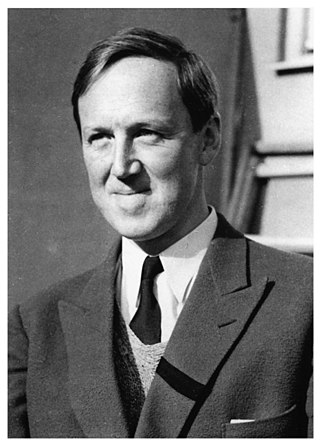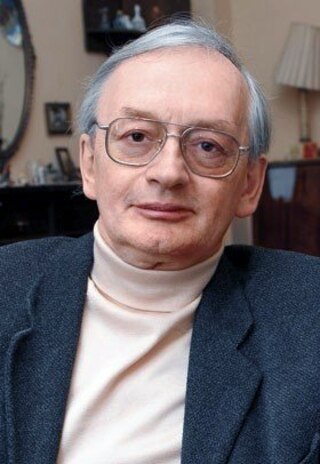Related Research Articles

Physics is the scientific study of matter, its fundamental constituents, its motion and behavior through space and time, and the related entities of energy and force. Physics is one of the most fundamental scientific disciplines. A scientist who specializes in the field of physics is called a physicist.
The following outline is provided as an overview of and topical guide to physics:

Richard Phillips Feynman was an American theoretical physicist. He is known for the work he did in the path integral formulation of quantum mechanics, the theory of quantum electrodynamics, the physics of the superfluidity of supercooled liquid helium, and in particle physics, for which he proposed the parton model. For his contributions to the development of quantum electrodynamics, Feynman received the Nobel Prize in Physics in 1965 jointly with Julian Schwinger and Shin'ichirō Tomonaga.

Alastair Preston Reynolds is a Welsh science fiction author. He specialises in hard science fiction and space opera.

Hannes Olof Gösta Alfvén was a Swedish electrical engineer, plasma physicist and winner of the 1970 Nobel Prize in Physics for his work on magnetohydrodynamics (MHD). He described the class of MHD waves now known as Alfvén waves. He was originally trained as an electrical power engineer and later moved to research and teaching in the fields of plasma physics and electrical engineering. Alfvén made many contributions to plasma physics, including theories describing the behavior of aurorae, the Van Allen radiation belts, the effect of magnetic storms on the Earth's magnetic field, the terrestrial magnetosphere, and the dynamics of plasmas in the Milky Way galaxy.

The ultimate fate of the universe is a topic in physical cosmology, whose theoretical restrictions allow possible scenarios for the evolution and ultimate fate of the universe to be described and evaluated. Based on available observational evidence, deciding the fate and evolution of the universe has become a valid cosmological question, being beyond the mostly untestable constraints of mythological or theological beliefs. Several possible futures have been predicted by different scientific hypotheses, including that the universe might have existed for a finite and infinite duration, or towards explaining the manner and circumstances of its beginning.

The Big Crunch is a hypothetical scenario for the ultimate fate of the universe, in which the expansion of the universe eventually reverses and the universe recollapses, ultimately causing the cosmic scale factor to reach zero, an event potentially followed by a reformation of the universe starting with another Big Bang. The vast majority of evidence indicates that this hypothesis is not correct. Instead, astronomical observations show that the expansion of the universe is accelerating rather than being slowed by gravity, suggesting that a Big Freeze is more likely. Nonetheless, some physicists have proposed that a "Big Crunch-style" event could result from a dark energy fluctuation.

The Big Bounce hypothesis is a cosmological model for the origin of the known universe. It was originally suggested as a phase of the cyclic model or oscillatory universe interpretation of the Big Bang, where the first cosmological event was the result of the collapse of a previous universe. It receded from serious consideration in the early 1980s after inflation theory emerged as a solution to the horizon problem, which had arisen from advances in observations revealing the large-scale structure of the universe.

The fine-tuned universe is the hypothesis that, because "life as we know it" could not exist if the constants of nature – such as the electron charge, the gravitational constant and others – had been even slightly different, our universe is tuned specifically for life. In practice, this hypothesis is formulated in terms of dimensionless physical constants.

A cyclic model is any of several cosmological models in which the universe follows infinite, or indefinite, self-sustaining cycles. For example, the oscillating universe theory briefly considered by Albert Einstein in 1930 theorized a universe following an eternal series of oscillations, each beginning with a Big Bang and ending with a Big Crunch; in the interim, the universe would expand for a period of time before the gravitational attraction of matter causes it to collapse back in and undergo a bounce.

Leonard Susskind is an American theoretical physicist, Professor of theoretical physics at Stanford University and founding director of the Stanford Institute for Theoretical Physics. His research interests are string theory, quantum field theory, quantum statistical mechanics and quantum cosmology. He is a member of the US National Academy of Sciences, and the American Academy of Arts and Sciences, an associate member of the faculty of Canada's Perimeter Institute for Theoretical Physics, and a distinguished professor of the Korea Institute for Advanced Study.

John David Barrow was an English cosmologist, theoretical physicist, and mathematician. He served as Gresham Professor of Geometry at Gresham College from 2008 to 2011. Barrow was also a writer of popular science and an amateur playwright.

Physics World is the membership magazine of the Institute of Physics, one of the largest physical societies in the world. It is an international monthly magazine covering all areas of physics, pure and applied, and is aimed at physicists in research, industry, physics outreach, and education worldwide.
Edward P. Tryon was an American scientist and a professor emeritus of physics at Hunter College of the City University of New York (CUNY). He was the first physicist to propose that our universe originated as a quantum fluctuation of the vacuum.

John R. Gribbin is a British science writer, an astrophysicist, and a visiting fellow in astronomy at the University of Sussex. His writings include quantum physics, human evolution, climate change, global warming, the origins of the universe, and biographies of famous scientists. He also writes science fiction.
Francis Edwin Close is a particle physicist who is Emeritus Professor of Physics at the University of Oxford and a Fellow of Exeter College, Oxford.

Sean Michael Carroll is an American theoretical physicist and philosopher who specializes in quantum mechanics, cosmology, and the philosophy of science. He is the Homewood Professor of Natural Philosophy at Johns Hopkins University. He was formerly a research professor at the Walter Burke Institute for Theoretical Physics at the California Institute of Technology (Caltech) department of physics. He also is currently an external professor at the Santa Fe Institute, and he has been a contributor to the physics blog Cosmic Variance, where he has published in scientific journals such as Nature as well as other publications, including The New York Times, Sky & Telescope, and New Scientist. He is known for his atheism, his vocal critique of theism and defence of naturalism. He is considered a prolific public speaker and science popularizer. In 2007, Carroll was named NSF Distinguished Lecturer by the National Science Foundation.

Paul Halpern is an American author and Professor of Physics at Saint Joseph's University in Philadelphia.

Alexei Alexandrovich Starobinsky was a Soviet and Russian theoretical physicist and cosmologist. He was a pioneer of the theory of cosmic inflation, for which he received the 2014 Kavli Prize in Astrophysics together with Alan Guth and Andrei Linde.
References
- ↑ Green, Graeme (2007) "60 SECONDS: Marcus Chown", Metro , 18 January 2007, retrieved 2010-03-27
- ↑ "Marcus Chown Lecture". Queen Mary University of London. Retrieved 19 March 2017.
- ↑ White, C. (June 2013). Interactions (PDF). Institute of Physics. p. 7. Retrieved 19 March 2017.
- ↑ Trotman, Clive (2008) "Esoteric concepts on relative scale", Otago Daily Times , 5 July 2008, retrieved 2010-03-27
- ↑ FABER AND FABER AND TOUCHPRESS PARTNER TO CREATE DIGITAL TITLES FOR iPAD, LAUNCHING WITH SOLAR SYSTEM London, England – November 30, 2010